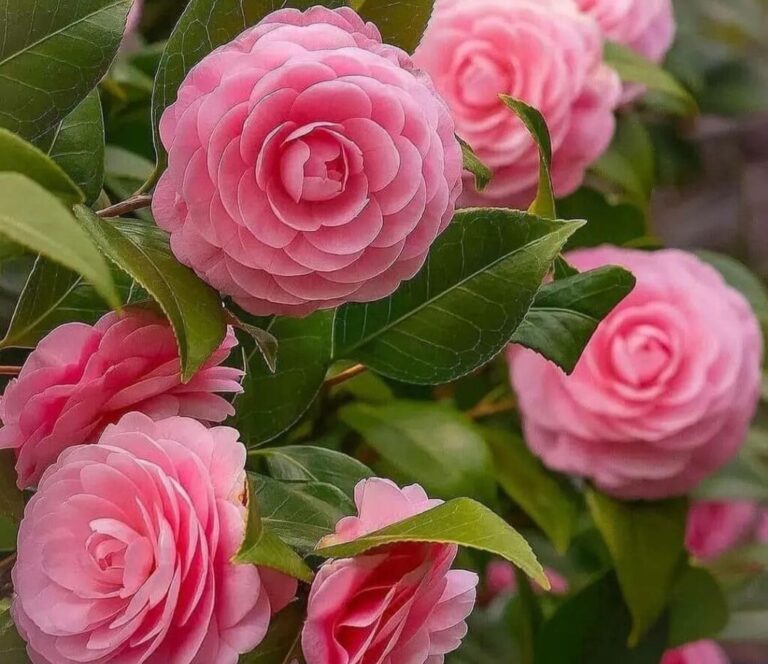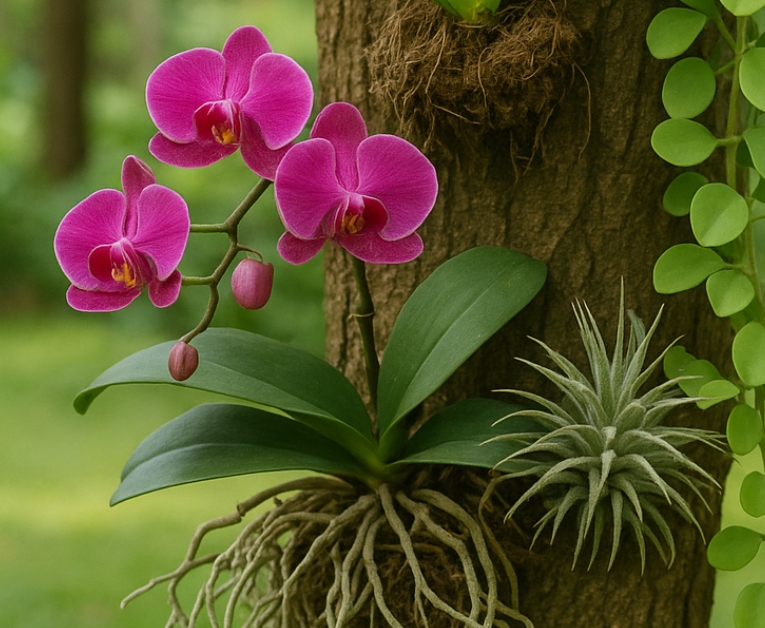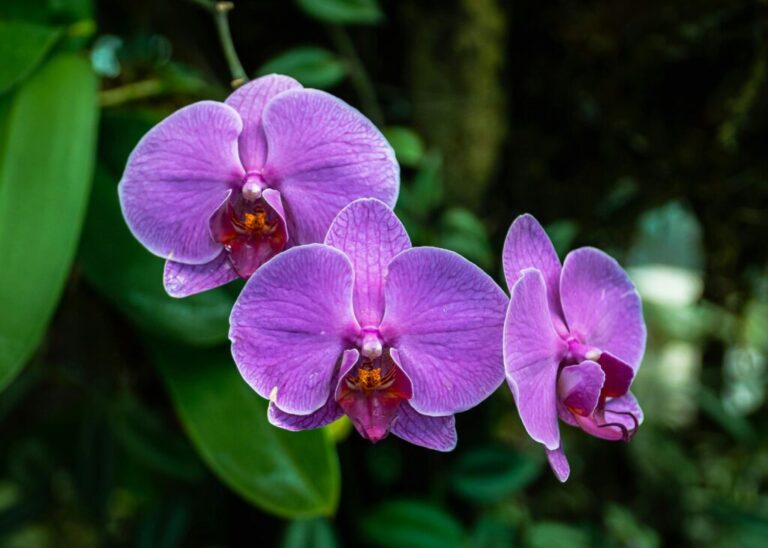Monstera Swiss Cheese Plant plants, particularly the Monstera deliciosa and Monstera adansonii varieties, have become quite popular in recent years. Their large, unique, and green leaves with cuts or holes are indeed a distinctive feature that makes them a favourite in graphic design and various merchandise like pillows, cushions, mugs, T-shirts, and wallpapers.
Apart from their aesthetic appeal, Monstera plants are also known for their air-purifying properties, making them great choices for indoor spaces. They can help improve indoor air quality by filtering out certain toxins and pollutants.
Monstera plants have epiphytic roots, similar to orchids, which absorb air and moisture. In their natural habitat, such as the tropical rainforests of Central America, they grow as evergreen vines or shrubs and attach themselves to tree trunks. Interestingly, some varieties of Monstera, notably Monstera deliciosa, produce edible fruits, although they are not as commonly available as the foliage.
The presence of holes or fenestrations in Monstera leaves is a natural characteristic. These holes allow the plants to capture more sunlight, which is beneficial for their growth. When Monstera plants are small, their leaves typically have a heart-shaped form without any holes. However, as the plant matures and develops more leaves, the new growth often exhibits the iconic fenestrations, adding to their charm.
Overall, Monstera plants are admired for their visually appealing foliage, air-purifying abilities, and the touch of modernity they bring to indoor spaces.
- 1 light requirements
- 2 Swiss cheese plant soil requirements
- 3 Swiss cheese plant Temperature and Humidity
- 4 Swiss cheese plant fertilizer requirements
- 5 Growing Swiss Cheese Plants From Seed
- 6 Potting and Repotting the Swiss Cheese Plant
- 7 Common Pests and Plant Diseases
- 8 Common Problems With Swiss Cheese Plants
- 9 FAQS
light requirements
condition Monstera plant requires. Find the balance between sunlight and shade if your Monstera is given to much light the leaves will turn yellow in colour to get lush green vigorous growth of the Monstera plant in medium to keep your Monstera plant in medium to write indirect light while it tolerate write indirect light while it tolerate little low light area. But you may notice leggy growth of your plant so ideal location is few feet at from South or west fencing windows. I have kept my Monstera on the east facing balcony . That get enough light through a curtains or near a window.if you see dust on the leaves clean it with a cloth.
Not a pet friendly plant. Keep dogs and cats away from the plants .if your pets have a bitei g habits.

Watering requirements
Watering is a delicate art when it comes to caring for a Swiss cheese plant, requiring a balance between hydration and restraint. Treat it like a discerning connoisseur, allowing the top inch of the soil to dry out before bestowing it with a sip of water.
Overwatering can drown its delicate roots and lead to rot, so exercise patience and observe its needs. When the time comes to water, do so generously, saturating the soil until the excess drains away, ensuring thorough hydration.
However, refrain from letting the plant sit in stagnant water, as it craves aeration and proper drainage. Listen attentively to the plant’s cues, for it will reveal signs of thirst, such as drooping leaves or a lighter feel to the pot. Through mindful watering practises, you can nurture a thriving Swiss cheese plant that stands as a testament to your nurturing touch.
Swiss cheese plant soil requirements
The Swiss cheese plant, scientifically known as Monstera deliciosa, is a popular houseplant known for its large, fenestrated leaves. Here are the soil requirements for the Swiss cheese plant:
Well-Draining Soil: Swiss cheese plants prefer a well-draining soil mix to prevent waterlogged roots. It’s important to choose soil that allows excess water to drain freely.
Organic Matter: Adding organic matter to the soil mix helps improve its fertility and moisture-retaining capacity. You can incorporate materials like compost, peat moss, or well-rotted manure to enrich the soil.
Loamy Soil: The ideal soil type for Swiss cheese plants is loamy soil, which is a well-balanced combination of sand, silt, and clay. Loamy soil offers good drainage while retaining adequate moisture and nutrients.
pH Level: Swiss cheese plants thrive in slightly acidic to slightly alkaline soil with a pH range of 6.0 to 7.5. Test the pH of your soil and make any necessary adjustments using amendments if it falls outside this range.
Aeration: The soil should provide good aeration to the plant’s roots. You can achieve this by incorporating perlite or coarse sand into the soil mix, which helps prevent compaction and improves airflow.
Nutrient-Rich Soil: Swiss cheese plants benefit from nutrient-rich soil. You can use a balanced, slow-release fertiliser or incorporate organic fertilisers into the soil mix to provide essential nutrients. Follow the instructions on the fertiliser packaging for proper application.
Moisture Retention: Although the soil should be well-draining, it should also retain enough moisture to keep the plant hydrated. Avoid allowing the soil to completely dry out between waterings, as Swiss cheese plants prefer slightly moist soil.
Swiss cheese plant Temperature and Humidity
The Swiss cheese plant, or Monstera deliciosa, flourishes in warm and humid conditions reminiscent of its tropical origins.
It thrives within a temperature range of 65°F (18°C) to 85°F (29°C), though it can tolerate slightly cooler temperatures. However, prolonged exposure to temperatures below 55°F (13°C) should be avoided to prevent damage.
Maintaining high humidity levels of around 60% to 80% is crucial for the Swiss cheese plant’s well-being. To achieve this, using a humidifier, placing the plant on a tray with water and pebbles, or regularly misting the leaves can be effective.
Additionally, it is important to keep the plant away from cold draughts and ensure good air circulation while avoiding dry air from heaters or vents. By providing a warm and humid environment with proper temperature and humidity control, you can create an optimal setting for the Swiss cheese plant’s growth and vitality.
Swiss cheese plant fertilizer requirements
Taking care of your Swiss cheese plant requires careful consideration when it comes to fertilisation. After potting or repotting, it’s crucial to exercise patience and wait for a period of four to six months before applying any fertilisers.
This allows the plant to adjust to its new environment and take advantage of any slow-release fertiliser already present in the potting mix. Once the waiting period is over, you can start a monthly fertilisation routine to support the growth and well-being of your plant.
Opt for a diluted all-purpose liquid fertiliser suitable for indoor plants, ensuring it is mixed at half strength. By providing the right nutrients at the appropriate intervals, you can ensure your Swiss cheese plant thrives, gracing your space with its lush and unique foliage.
Types of Swiss Cheese Plants
There are a few different types or varieties of Swiss cheese plants (Monstera species) that are popular among plant enthusiasts. Here are a few notable ones:
Monstera deliciosa: Also known as the “Swiss cheese plant” or “Split-leaf philodendron,” this is the most common and recognisable variety. It features large, glossy, heart-shaped leaves with distinctive holes and splits, giving it the appearance of Swiss cheese. It is a popular choice for indoor gardens and adds a tropical touch to any space.
Monstera adansonii: Often referred to as the “Swiss cheese vine” or “Monkey Mask Plant,” this variety has smaller leaves compared to Monstera deliciosa. The ki leaves are still characterised by their iconic holes and fenestrations, creating an intricate pattern. Monstera adansonii is a vining plant that can be grown in hanging baskets or trained to climb on a support structure.
Monstera obliqua: Known as the “Swiss cheese plant’s elusive cousin,” Monstera obliqua is a rare and highly sought-after variety. It is similar to Monstera adansonii but has more pronounced and intricate leaf fenestrations. Due to its rarity and delicate nature, it is more challenging to find and cultivate.
Monstera pinnatipartita: This variety is also known as the “Swiss cheese vine” or “Ceriman.” It features deeply lobed leaves with prominent splits and holes. Monstera pinnatipartita is a climbing plant that can be trained on moss poles or trellises. It adds a unique touch to any indoor space with its striking foliage.
Swiss cheese plant pruning
Pruning is an essential task for the care of the Swiss cheese plant, a climber that can outgrow its designated space. Spring is the recommended time for pruning, as it coincides with the plant’s active growth phase.
Using sterilised pruning shears, trim the stems back by a maximum of 25 percent, ensuring to make clean cuts just above a leaf node. This technique promotes new growth and maintains the plant’s desired shape.
While pruning, it is also advisable to remove any dead or damaged leaves, enhancing the plant’s appearance and reducing the risk of pests or diseases. Proper disposal of pruned material,
particularly if diseased, is important to prevent the spread of potential issues. Regular pruning not only keeps the Swiss cheese plant healthy but also allows you to shape its growth and maintain its overall vitality.
Propagating a Swiss Cheese Plant
Propagating the Swiss cheese plant (Monstera deliciosa) is an exciting way to expand your plant collection or share it with others. There are a few methods you can use to propagate this popular houseplant.
One common method is through stem cuttings. Begin by selecting a healthy stem with several nodes, which are the points where leaves emerge. Using clean and sterilised pruning shears, make a clean cut just below a node. Remove any lower leaves near the base of the cutting, leaving a few at the top.
Next, prepare a small container with a well-draining potting mix. Moisten the soil slightly, ensuring it is not overly wet. Make a small hole in the soil and gently place the cutting into it, burying the node and leaving the upper leaves exposed.
To encourage successful rooting, it is beneficial to create a humid environment. You can cover the cutting with a clear plastic bag or use a propagation tray with a clear lid. This helps to maintain moisture and create a mini-greenhouse effect.
Check the cutting regularly and mist it lightly to keep the humidity levels up. After a few weeks, you should start to see roots developing. Once the roots are well-established, typically after 4–8 weeks, you can transplant the cutting into a larger pot with regular potting soil.
Growing Swiss Cheese Plants From Seed
To cultivate a Swiss cheese plant from seeds, follow these steps:
Prepare a shallow tray and fill it with moistened seed-starting mix.
Place the seeds on the surface of the growing medium and lightly cover them.
Cover the tray with plastic wrap to retain moisture, and put it in a warm spot with indirect sunlight.
Mist the growing medium frequently to keep it just barely damp.
Within a few weeks, the seeds ought to begin to sputter. Once they sprout, remove the plastic wrap while ensuring the medium stays moist.
After a few months, when the seedlings have grown sufficiently, they can be transplanted.
Potting and Repotting the Swiss Cheese Plant
Consider the following guidelines for potting and repotting a Swiss cheese plant:
Choose a container with drainage holes, such as a hanging basket.
When potting a nursery plant, select a container slightly larger than the root ball and use a peat-based potting mix.
Place the plant at the same depth as it was in its nursery container.
Repot every two years in the spring, using a slightly larger container and fresh potting mix.
Common Pests and Plant Diseases
Be aware of the following common pests and diseases that may affect Swiss cheese plants:
Mealybugs, spider mites, scale, and whiteflies are typical houseplant pests. Treat them with nontoxic insecticides or neem oil.
Look out for diseases like root rot, rust, powdery mildew, and blight.
Common Problems With Swiss Cheese Plants
While the Swiss cheese plant is generally trouble-free in suitable conditions, it may encounter common issues:
Yellowing leaves often result from overwatering. Ensure the plant is not sitting in soggy soil and allow it to slightly dry out between waterings.
Black marks on the leaves can indicate leaf burns caused by direct sunlight. Protect the plant from prolonged exposure to intense sunlight, particularly in the afternoon.
FAQS
Why aren’tMonstera Swiss Cheese Plant my leaves developing holes?
Lack of fenestration (holes) may be due to insufficient light or nutrients. Ensure your plant gets bright, indirect light and is properly fed.
How big can a Monstera Swiss Cheese Plant grow?
In ideal conditions, it can grow up to 6-8 feet indoors. Regular pruning helps control its size and encourages bushier growth.
What kind of soil is best for Monstera adansonii?
A well-draining potting mix is essential. A mix of peat moss, perlite, and regular potting soil works well. You can also add orchid bark for better aeration.







